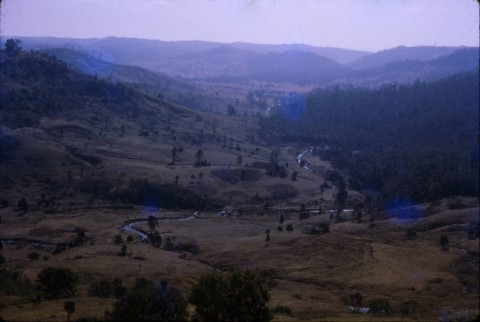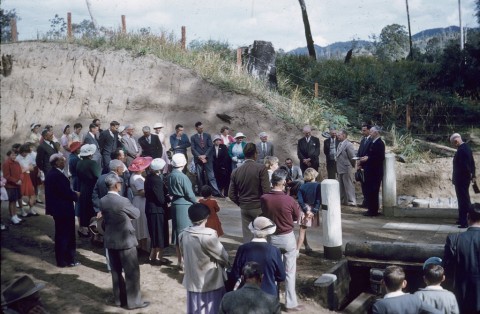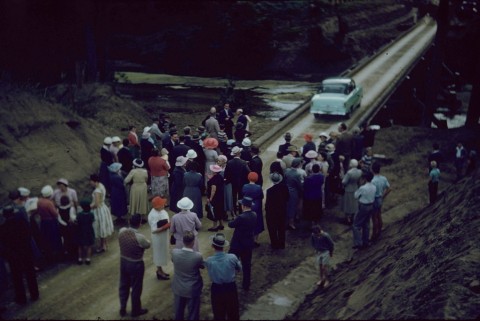Kenilworth is a town and district positioned near the headwaters of the Mary River, 37 km west of Mount Coolum. It was named after the heritage-listed Kenilworth homestead (1865) and pastoral property, part of the Obi Obi pastoral run dating from 1850s. The naming of the property possibly came from Sir Walter Scott's popular novel, Kenilworth.
In the late 1890s there were a few farm selections in the Kenilworth district, enough for the formation of a Kenilworth Farmers' Association (1901). Most farms were milk producers, and the association influenced the building of the Caboolture Cooperative butter factory. In 1912 Pugh's post office directory recorded about 20 farmers and a station manager/post master at Kenilworth.
The Kenilworth pastoral estate was subdivided for farms in the early 1920s and a township was surveyed. A state primary school and a Church of England were opened in 1924 and 1925. The post office directory recorded about 50 farmers, mostly dairy farmers with a few banana growers, together with a storekeeper. By the early postwar years there were also a hotel, a motor garage, a picture-theatre proprietor, an ES&A bank and a CWA. Kraft opened a dairy factory in 1952.
After Kraft withdrew in 1989 the factory was locally acquired and converted to speciality cheese-making. Kenilworth had the attractive qualities of a compact township with a show ground, a hall, a swimming pool, a museum, Anglican and Catholic churches and a bowling club. The Kenilworth State Community College enlarged schooling to a P-10 curriculum. The Imbil State forest and the heritage-registered Kenilworth homestead are north of the township. Kenilworth's census populations have been:
| Census Date | Population |
|---|---|
| 1921 | 68 |
| 1933 | 296 |
| 1966 | 363 |
| 2006 | 523 |
| 2011 | 559 |
Kenilworth State School: 75th anniversary 1924-1999, Kenilworth, the school, 1999



